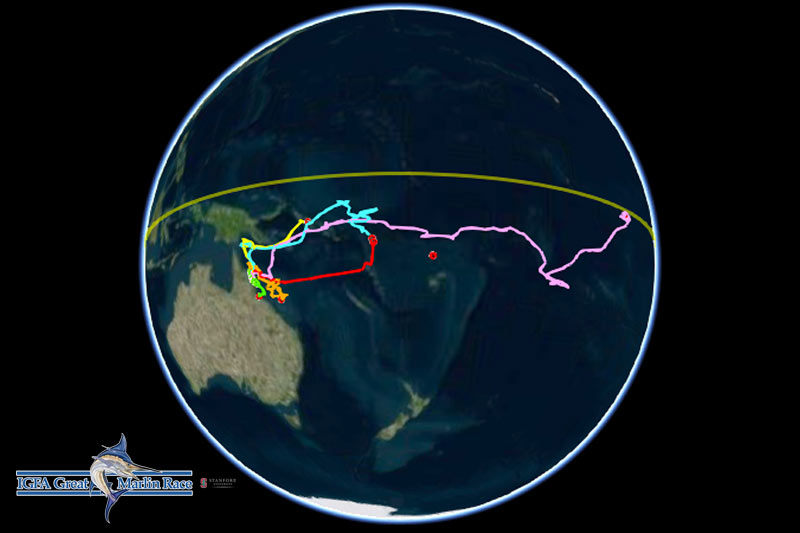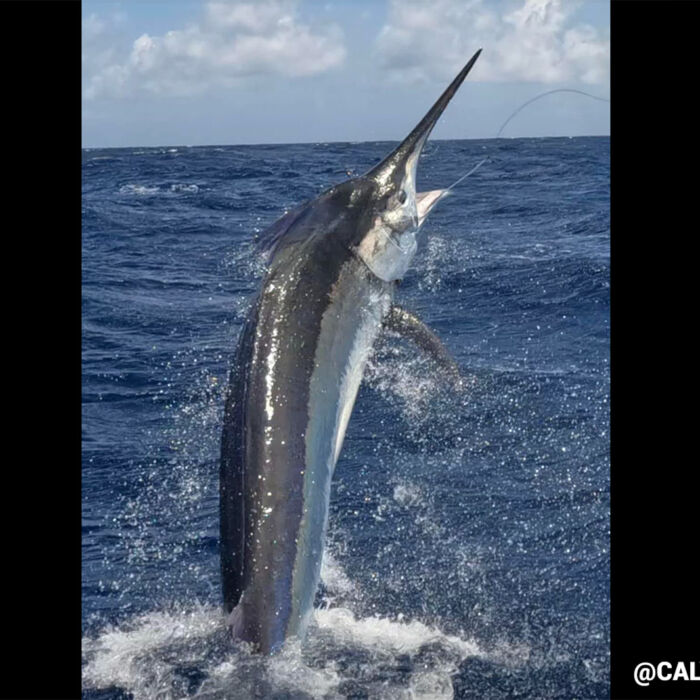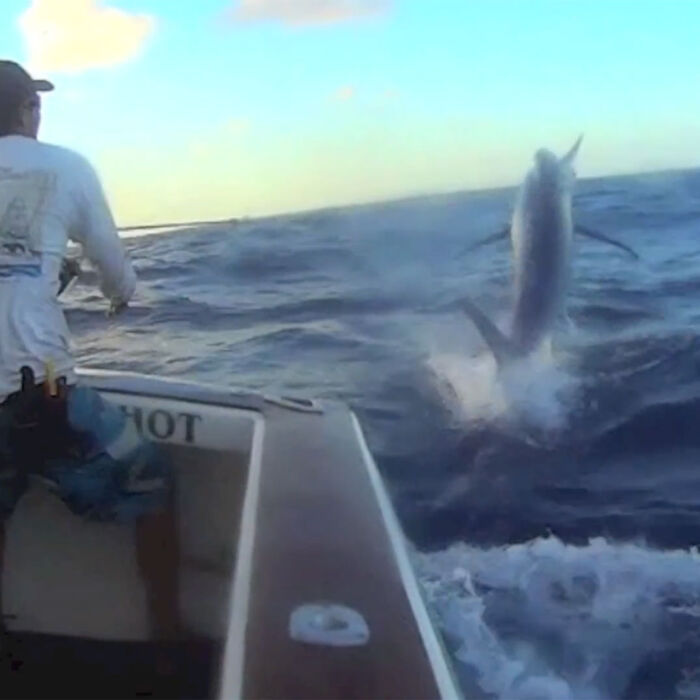The winner of the 2015 Lizard Island leg of the Great Marlin Race was a 700lb black marlin tagged on Capt. Bill Billson’s Viking II for angler Gee Soh – with the tag sponsored by Peter Teakle – which traveled 4,393nm. This fish is also the current leading fish for the entire 2015/2016 race calendar!
See the standings from the 2015 LI leg of the race here (graphic above).
It’s quite interesting that the Lizard Island Black Marlin hold 4 out of 5 positions on the “Longest Tracks Ever” leaderboard. Personally I think of blue marlin as being more nomadic. (?!?) Of course the tags are staying on longer and so the tracks will be longer (I think they originally were set to pop up after three months, these days its six months so we do expect the tracks to be longer) but this is the same for all species and races just not our race.
As always very interesting reading!
Updated with comment from Dr. Fish – Julian Pepperell
These longer tracks on large, adult females are indeed very interesting. Over the course of tagging with plastic tags, these larger fish are very rarely caught (or at least tags reported) at distances away from the reef. Earlier PAT tagging had tags set for 6 months, but they rarely lasted that long on fish, so the movements shown on maps suggested that the big fish didn’t move huge distances. For some reason, a good percentage of tags used in the GMR over the past couple of seasons are staying on their fish for the full duration and showing considerable movement into the tropical central and eastern Pacific. Good stuff!






3 Comments
These longer tracks on large, adult females are indeed very interesting. Over the course of tagging with plastic tags, these larger fish are very rarely caught (or at least tags reported) at distances away from the reef. Earlier PAT tagging had tags set for 6 months, but they rarely lasted that long on fish, so the movements shown on maps suggested that the big fish didn’t move huge distances. For some reason, a good percentage of tags used in the GMR over the past couple of seasons are staying on their fish for the full duration and showing considerable movement into the tropical central and eastern Pacific. Good stuff
As always so lovely to have you weigh in Julian. Maybe the tags do stay on better. I noticed this race also had two ‘failures to report’ which I had not seen before. But its not only interesting to see where they end up but watching the tracks, where they seem to stop and spend a bit of time in the same area!
There have been a few ‘failures to report’ for earlier races too. Some assume that these must be mortalities, but there are other plausible explanations to. For example, tag gets damaged (especially antenna); tag malfunctions (although these days, the tags are pretty reliable); tag bitten off by toothy critter and swallowed or damaged; tag gets fouled with growth and doesn’t float to surface. Some would definitely be mortalities, but overall, results are good
Comments are closed.